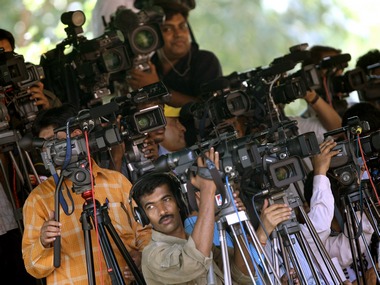The ability to speak one’s mind has never been easier, thanks to the Internet and social media. The ability to publish has never been easier, thanks to the Internet and social media. The ability to broadcast news and opinions instantly has never been easier, thanks to satellite television and advancements in communication links. The ability to defame has never been easier. The ability to be irresponsible in news coverage has never been easier. The ability to insult, provoke and incite has never been easier. 2011 is the year that saw Justice Katju, chairman of the Press Council of India, vehemently arguing that news television be brought under the ambit of the Press Council. 2011 is when IIPM sued Caravan magazine for Rs 50 crore for an allegedly defamatory article. 2011 is the year that saw Times Now being slapped with a Rs 100 crore defamation suit by Justice Sawant. 2011 is the year when Suhel Seth was sued for – hold your breath – Rs. 200 crore by ITC. 2011 is the year when Kapil Sibal threatened to regulate content on the internet in general and social media in particular. 2011 is the year when The Weekend Leader was sued by the Times of India for Rs. 100 crore. 2011 is the year when broadcast editors unilaterally and voluntarily imposed guidelines for the coverage of the Abhishek Bachchan – Aishwarya Rai baby. 2011 is the year that the Indian Broadcasters Federation evolved their own self-regulatory guidelines and created a complaints redressal mechanism. [caption id=“attachment_165869” align=“alignleft” width=“380” caption=“The defamation cases are the tip of the iceberg. Reuters”]  [/caption] If technology makes it frighteningly easy to publish, it’s clear that, while you have the freedom to publish and to speak, it’s a freedom that comes with conditions attached. The freedoms come with responsibility – and irresponsibility, we now learn, can be punished. Continued irresponsibility could lead to a curb on the freedoms in the form of regulation, perhaps even a slice of censorship. The defamation cases are the tip of the iceberg and the final judgments will be closely watched. If the courts rule, in one or more cases, in favour of the complainant, look out for a rash of defamation cases being filed. Aggrieved citizens and corporates who have felt helpless in the face of unfair and irresponsible media coverage will have new hope that justice is, indeed, available. The case against Suhel Seth, too, merits close watching. Did he actually tweet what ITC claims he did, or was it, as Seth has claimed, an update made by someone who hacked into his twitter account. Notwithstanding that, was the update itself defamatory and subject to penal action? Is broadcast media a law unto itself? Is the self-regulation enough – or is more needed before Justice Katju can be satisfied? What is the role of the regulator in story selection? Does news media have a greater role to perform as far as the disadvantaged sections of society are concerned? Can a defamatory Facebook update be punished as severely as a defamatory article in a newspaper? The incidents of 2011 mentioned above suggest that 2012 will be a defining year for news media and social media in India. They also suggest that all is not well with the news industry. Issues such as paid news are not even being debated, and it will rear its head once elections come around – and come back to bite it. India has, thankfully, a free press and near free speech. Introspect and improve, and it’ll stay that way. Ignore the concerns of citizens, corporates and the establishment, hoping this problem will go away will ensure that the pressure for regulation will be more severe than it has ever been.
The incidents of 2011 suggest that 2012 will be a defining year for news media and social media in India.
Anant Rangaswami was, until recently, the editor of Campaign India magazine, of which Anant was also the founding editor. Campaign India is now arguably India's most respected publication in the advertising and media space. Anant has over 20 years experience in media and advertising. He began in Madras, for STAR TV, moving on as Regional Manager, South for Sony’s SET and finally as Chief Manager at BCCL’s Times Television and Times FM. He then moved to advertising, rising to the post of Associate Vice President at TBWA India. Anant then made the leap into journalism, taking over as editor of what is now Campaign India's competitive publication, Impact. Anant teaches regularly and is a prolific blogger and author of Watching from the sidelines. see more


)

)
)
)
)
)
)
)
)



